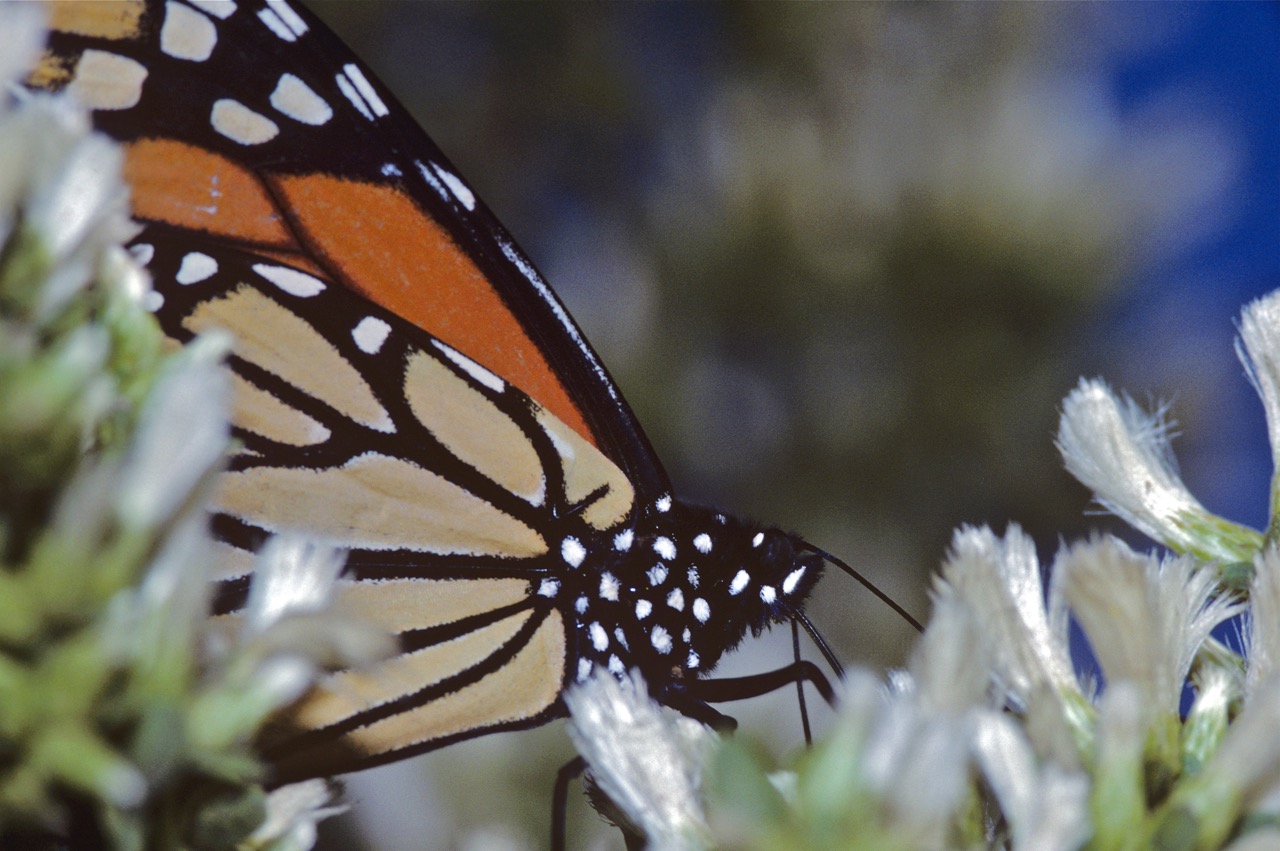2021.10.14 | The Migration Habits of Monarch Butterflies

Monarchs are showing up in Cambria and people are rejoicing! After last year’s dreadfully low count, there has been justified concern that we would not be seeing monarchs on our coast again. With butterflies arriving for the winter, we now have hope that this year will be better.
Many people are familiar with the life cycle of the monarch butterfly: adult females lay eggs on milkweed – and only milkweed. Each egg hatches into a larva (caterpillar) that goes through several molts before it forms a chrysalis that protects it from predators while it metamorphoses into a butterfly. The entire process takes between 22 to 37 days. During the summer, monarchs live four to six weeks and experience three to four breeding generations.
What may be less familiar is the migrating generation of monarchs. The last cohort born each summer has a very different life than the earlier ones. Instead of mating and laying eggs right away, this generation of butterflies puts its energy into travel to overwintering sites. Some eastern populations fly as far as 3,000 miles to Mexico. While western monarchs do not travel as far, migrating is still a critical phase in their continued existence. This winter generation can live up to seven months.
The natural pattern for North American monarchs is for the migrating cohort to spend months together at overwintering sites, then breed in the spring on their return to summer habitats. The following short-lived generations concentrate on breeding and moving north until the end of summer when the migrating generation is born once again.
There are many thousands of acres that can be improved for monarch breeding habitat but precious few sites where monarchs overwinter. In fact, The Xerces Society and others have identified diminished overwintering habitat as a prime threat to western monarchs.
Another threat to monarchs’ survival is disruption of the butterflies’ migration caused by breeding out of season. Access to milkweed that blooms all year long, as tropical milkweed does, encourages butterflies to lay eggs year-round rather than continue their natural migration pattern. Captive rearing has been shown to impair monarchs’ ability to navigate to overwintering sites. Growing milkweed – even local species – within five miles of coastal overwintering sites further interrupts their migration pattern.
To help Cambria’s monarchs, grow plants that bloom in later fall and winter. Sunflowers, seaside daisy, coyote brush, arroyo willow, and manzanita are all good native plant choices. In fact, one reason monarchs may overwinter in Cambria is that the area is rich with arroyo willow and coyote brush. Milkweed, native or non-native, is an excellent plant for those who live more than five miles from the coast but poses risks in Cambria. Although many online sites recommend growing milkweed, that advice is for places where monarchs do not overwinter.
We are fortunate in Cambria because we are custodians of a rare place vital to monarchs’ survival. Fiscalini Ranch Preserve is one of their precious overwintering sites, and one of the very few where the butterflies still shelter on native trees. Cambria Community Services District and Friends of the Fiscalini Ranch Preserve are working with The Xerces Society to protect and enhance monarch habitat on the Ranch. By continuing to care for the forest on Fiscalini Ranch Preserve and by adapting our care for monarchs to local conditions, we play an important part in their recovery.
Report your monarch sightings through the iNaturalist app to help scientists track their populations.
Image: Monarch on coyote brush (Baccharis species) by Brad Seek, with permission
First published in https://cambriaca.org/


